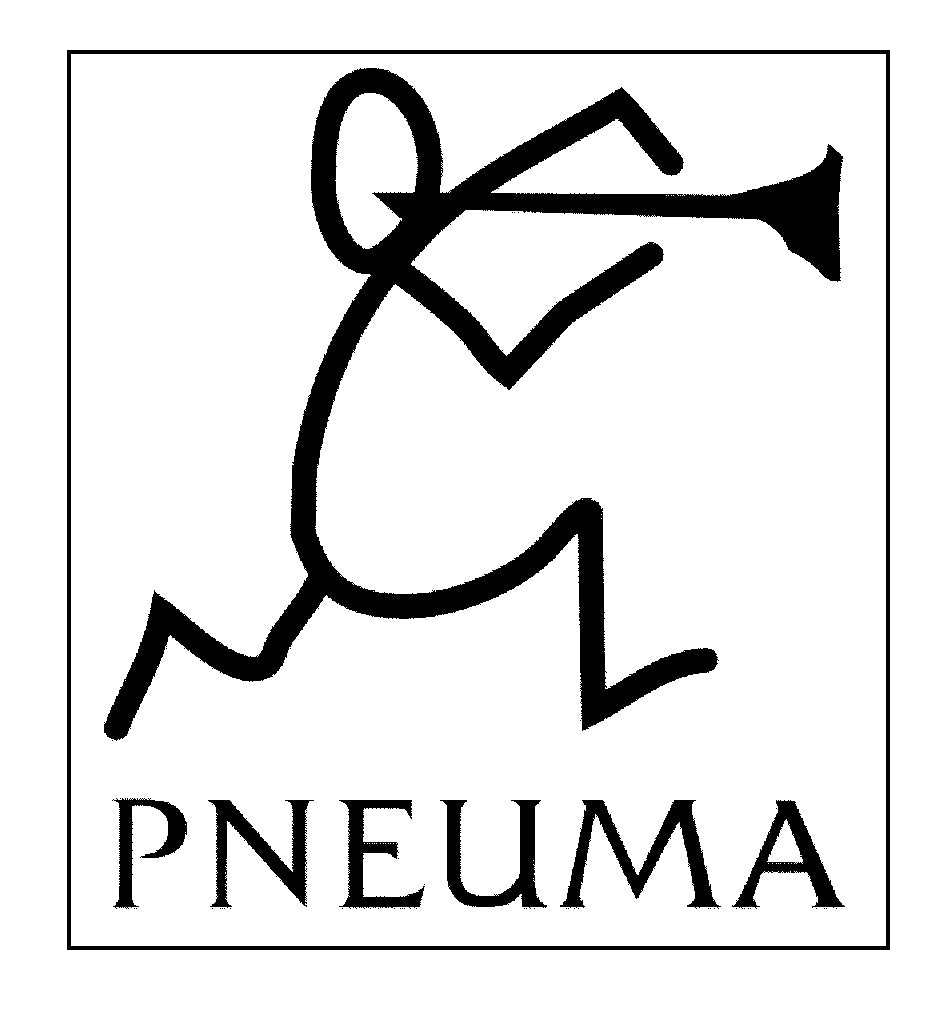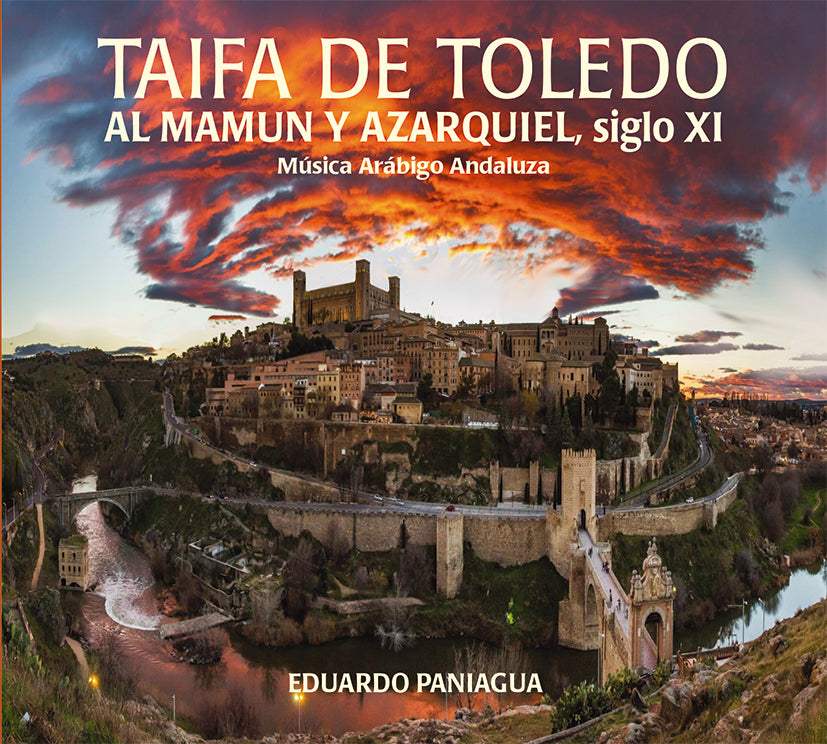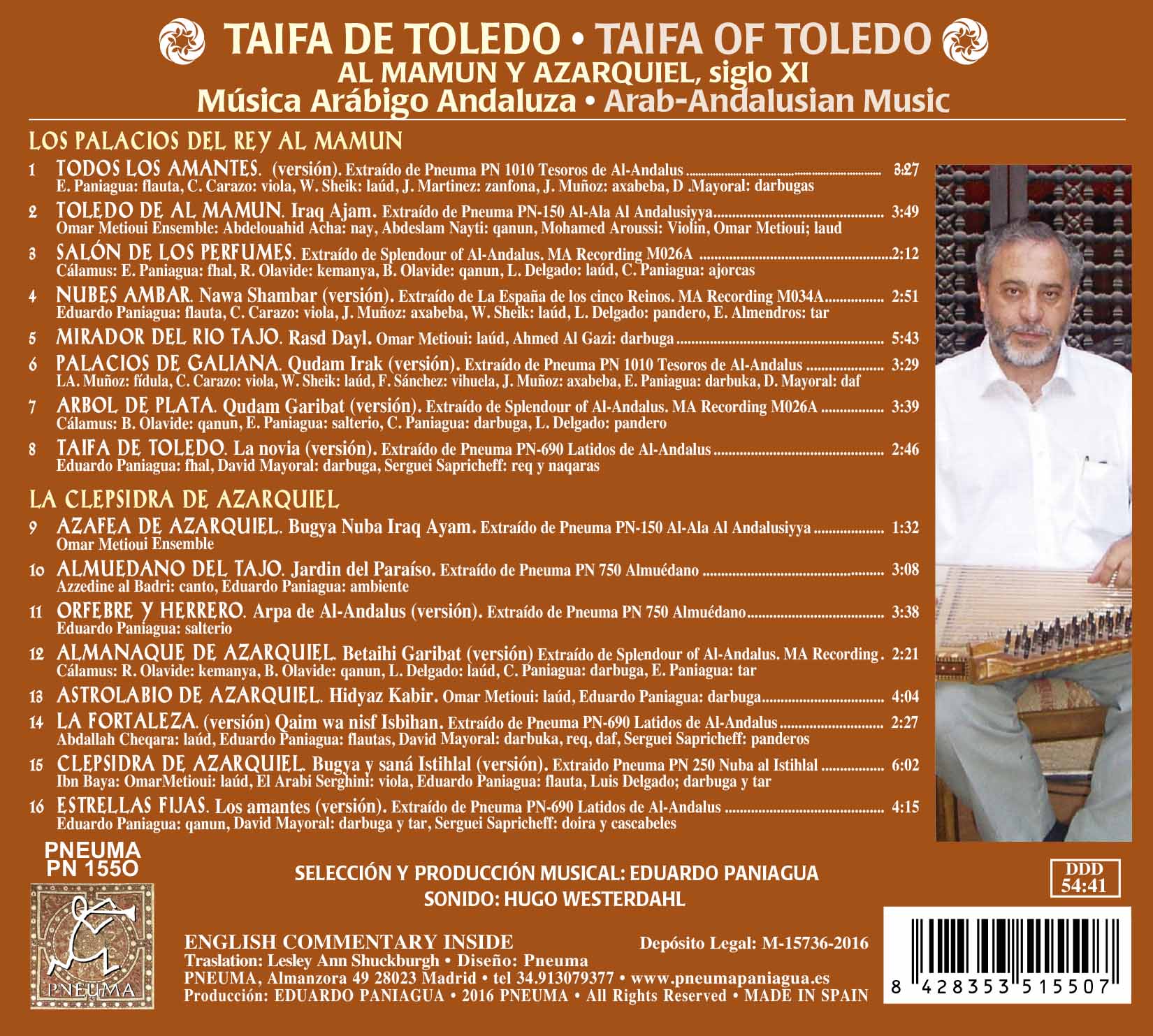pneumamusic
PN 1550 TAIFA DE TOLEDO
PN 1550 TAIFA DE TOLEDO
No se pudo cargar la disponibilidad de retiro
Índice
Índice
TAIFA DE TOLEDO
AL MAMUN Y AZARQUIEL, siglo XI
Música Arábigo Andaluza. Arab-Andalusian Music
EDUARDO PANIAGUA
PN-155O
LOS PALACIOS DEL REY AL MAMUN
1 TODOS LOS AMANTES. (versión). Extraído de Pneuma PN 1010 Tesoros de Al-Andalus 3:27
E. Paniagua: flauta, C. Carazo: viola, W. Sheik: laúd, J. Martinez: zanfona, J. Muñoz: axabeba, D. Mayoral: darbugas
2 TOLEDO DE AL MAMUN. Iraq Ajam. Extraído de Pneuma PN-150 Al-Ala Al Andalusiyya 3:49
Omar Metioui Ensemble: Abdelouahid Acha: nay, Abdeslam Nayti: qanun, Mohamed Aroussi: Violin, Omar Metioui; laud
3 SALÓN DE LOS PERFUMES. Extraído de Splendour of Al-Andalus. MA Recording M026A 2:12
Cálamus: E. Paniagua: fhal, R. Olavide: kemanya, B. Olavide: qanun, L. Delgado: laúd, C. Paniagua: ajorcas
4 NUBES AMBAR. Nawa Shambar (versión). Extraído de La España de los cinco Reinos. MA Recording M034A 2:51
Eduardo Paniagua: flauta, C. Carazo: viola, J. Muñoz: axabeba, W. Sheik: laúd, L. Delgado: pandero, E. Almendros: tar
5 MIRADOR DEL RIO TAJO. Rasd Dayl. Omar Metioui: laúd, Ahmed Al Gazi: darbuga 5:43
6 PALACIOS DE GALIANA. Qudam Irak (versión). Extraído de Pneuma PN 1010 Tesoros de Al-Andalus 3:29
LA. Muñoz: fídula, C. Carazo: viola, W. Sheik: laúd, F. Sánchez: vihuela, J. Muñoz: axabeba, E. Paniagua: darbuka, D. Mayoral: daf
7 ARBOL DE PLATA. Qudam Garibat (versión). Extraído de Splendour of Al-Andalus. MA Recording M026A 3:39
Cálamus: B. Olavide: qanun, E. Paniagua: salterio, C. Paniagua: darbuga, L. Delgado: pandero
8 TAIFA DE TOLEDO. La novia (versión). Extraído de Pneuma PN-690 Latidos de Al-Andalus 2:46
Eduardo Paniagua: fhal, David Mayoral: darbuga, Serguei Sapricheff: req y naqaras
LA CLEPSIDRA DE AZARQUIEL
9 AZAFEA DE AZARQUIEL. Bugya Nuba Iraq Ayam. Extraído de Pneuma PN-150 Al-Ala Al Andalusiyya 1:32
Omar Metioui Ensemble
10 ALMUEDANO DEL TAJO. Jardin del Paraíso. Extraído de Pneuma PN 750 Almuédano 3:08
Azzedine al Badri: canto, Eduardo Paniagua: ambiente
11 ORFEBRE Y HERRERO. Arpa de Al-Andalus (versión). Extraído de Pneuma PN 750 Almuédano 3:38
Eduardo Paniagua: salterio
12 ALMANAQUE DE AZARQUIEL. Betaihi Garibat (versión) Extraído de Splendour of Al-Andalus. MA Recording 2:21
Cálamus: R. Olavide: kemanya, B. Olavide: qanun, L. Delgado: laúd, C. Paniagua: darbuga, E. Paniagua: tar
13 ASTROLABIO DE AZARQUIEL. Hidyaz Kabir. Omar Metioui: laúd, Eduardo Paniagua: darbuga 4:04
14 LA FORTALEZA. (versión) Qaim wa nisf Isbihan. Extraído de Pneuma PN-690 Latidos de Al-Andalus 2:27
Abdallah Cheqara: laúd, Eduardo Paniagua: flautas, David Mayoral: darbuka, req, daf, Serguei Sapricheff: panderos
15 CLEPSIDRA DE AZARQUIEL. Bugya y saná Istihlal (versión). Extraido Pneuma PN 250 Nuba al Istihlal 6:02
Ibn Baya: OmarMetioui: laúd, El Arabi Serghini: viola, Eduardo Paniagua: flauta, Luis Delgado; darbuga y tar
16 ESTRELLAS FIJAS. Los amantes (versión). Extraído de Pneuma PN-690 Latidos de Al-Andalus 4:15
Eduardo Paniagua: qanun, David Mayoral: darbuga y tar, Serguei Sapricheff: doira y cascabeles
DDD 54:41
SELECCIÓN Y PRODUCCIÓN MUSICAL: EDUARDO PANIAGUA
SONIDO: HUGO WESTERDAHL
ENGLISH COMMENTARY INSIDE Depósito Legal: M-15736-2016
Traslation: Lesley Ann Shuckburgh • Diseño: Pneuma
PNEUMA, Almanzora 49 28023 Madrid
Producción: EDUARDO PANIAGUA • 2016 PNEUMA • All Rights Reserved • MADE IN SPAIN
Descripción
Descripción
AL MAMUN Y AZARQUIEL. Esplendor del Taifa de Toledo, siglo XI
Toledo fue capital del reino visigodo cuando en el siglo VI Atanagildo trasladó desde Sevilla a la ciudad romana de Toletum la sede de su reino. En el año 711 los musulmanes conquistan la “ciudad de los reyes” integrándola en el estado de Al-Andalus. Toledo pasó a ser capital de su frontera media como principal ciudad del centro de la Península. La nueva aristocracia hizo de la ciudad un foco cultural y un rival político de Córdoba, capital del estado. Los asesinatos políticos de la “noche toledana” o “jornada del foso” en el año 807 y el levantamiento sofocado por ‘Abd al-Rahman III en 980/982 marcan esta rebeldía. Tras la caída del Califato en 1031, Toledo fue capital de su Taifa regida por la familia Banu Dil-Nun, siendo sus reyes: Isma‘il al-Zafir (h.1018-1043), al-Ma’mun (1043-1075) y Yahyà al-Qadir (1075-1085).
El rey al-Ma’mun lleva a Toledo a su cúspide de esplendor político y cultural, rodeándose en sus palacios de médicos, científicos y artistas. El 25 de mayo del año 1085, Alfonso VI de Castilla y León, que había sido acogido en Toledo por al-Ma’mun en su destierro durante 10 años, entra en Toledo recuperando la “ciudad imperial” denominándose “Emperador de las dos religiones” tras instaurar el reino cristiano.
AL MAMUN
El Alficén de Toledo era la zona palacial y administrativa situada en la parte inexpugnable noreste de Toledo. Fue ordenado construir por el califa ‘Abd al-Rahman III. Estaba rodeado por una muralla que lo aislaba de la medina toledana y tenía acceso directo e independiente desde el puente de Alcántara. En su interior se levantaban dos alcázares, uno de caracter militar situado en el mismo emplazamiento que el actual, y otro, llamado Palacios de Galiana desde el siglo XIII, que sirvió de residencia a gobernadores y reyes. El desnivel del terreno en esa área hizo que el recinto se organizase en terrazas, al igual que sucedió en la ciudad palatina cordobesa de Madinat al-Zahra. La terraza más elevada era el área privilegiada, con función militar y residencial, mientras que la zona inferior, próxima al río y a la puerta de Alcántara, estaba destinada a servicios, baños y al cuerpo de guardia.
Según el relato del toledano Ibn Yabir, recogido por el historiador lbn Hayyan, (Córdoba 987-1075), el rey al-Ma’mun construyó un palacio para celebrar la fiesta de la circuncisión de su nieto. Ibn Yabir estuvo en ella y habla de salones ricamente decorados, por los que paseaban los invitados. Los invitados a la fiesta de al-Ma’mun fueron conducidos a un segundo edificio que tenía un gran patio con flores y les hicieron entrar en una habitación que había sido tapizada con brocado persa de Tustar en oro y con cortinajes que pendían de los arcos. A continuación, les condujeron al Salón de los Perfumes que estaba situado en lo alto, como mirador sobre el río, y que era el más lujoso de los salones. Comenzaron a ser perfumados por el aroma de los pebeteros de plata que contenían aloe indio, mezclado con ámbar de Fustat.
El más bello salón era el llamado Palacio al-Mukarram (venerado o reverenciado). Tenía dos estanques en cuyas esquinas se levantaban las figuras de unos leones de oro forjados con gran arte, que asustaban a los que les miraban con sus adus¬tos rostros y que arrojaban agua de sus bocas con la suavidad de gotas de lluvia o de limaduras de plata. En el fondo de cada estanque había una pila de gran tamaño labrada del mejor mármol, con extraordinarios grabados de figuras de animales, aves y árboles. En cada estanque el agua envolvía un árbol de plata, alto y de extraordinaria forma y acabada factura, que estaban clavado en medio de cada pilón con la más refinada técnica. El agua subía por ellos desde los dos pilones y se deslizaba desde lo alto de sus ramas como la llovizna. El agua al entrar producía un murmullo que sobrecogía al alma y se elevaba a la cima de una columna gruesa, deslizándose desde unas aberturas para humedecer las figuras de las aves y los frutos con una lengua pulimentada, cuya belleza encandilaba a la vista.
También construyó al-Ma’mun una almunia a las afueras de la ciudad, junto al río Tajo, conocida como Salón de la Noria, conocidos hoy como Palacios de Galiana. La descripción conservada se debe a un poeta de la época que visitó el lugar: Las flores exhalaban su perfume y, sobre el río, los invitados bebían la copa de la mañana o de la tarde. La rueda hidráulica gemía como una camella que ha perdido a su cría. El cielo tenía color de ámbar por las nubes cargadas de lluvia y el jardín estaba salpicado con las gotas del rocío.
AZARQUIEL
Azarquiel o Al-Zarqali (Toledo, h.1029 - Sevilla, 1087), de nombre completo Abū Isḥāq Ibrāhīm ibn Yaḥyā al-Naqqāsh al-Zarqālī, fue un importante astrónomo y geógrafo de Al-Ándalus. El nombre Azarquiel es la forma latinizada de una especie de apodo con el que era conocido en vida debido a sus ojos azules (zarcos). Vivió en Toledo hasta que en 1085 la conquista castellana de la ciudad lo llevó a emigrar a Sevilla de al-Mutamid, donde murió.
Azarquiel trabajó como herrero y orfebre destacando por su destreza en los metales. Fabricó instrumentos científicos de precisión, como astrolabios, a petición de astrónomos árabes y hebreos. La comunicación con estos sabios le llevó a crear innovaciones como la azafea. Su obra la conocemos fundamentalmente a través de las traducciones del judío toledano Yehuda ben Moshe, de Guillelmus Anglicus y de Yehuda Mosca, del scriptorium real de Fernando III y Alfonso X el Sabio dos siglos después. Sus obras mas importantes son: Tratado de la azafea, Tratado de la lámina de los siete planetas, Almanaque de Ammonio y Tratado relativo al movimiento de las estrellas fijas.
Azarquiel construyó una célebre clepsidra a orillas del río Tajo. Para su construcción tomó como modelo un reloj que había existido en la ciudad india de Arín (Uyyain), dotado de un autómata que señalaba las horas del día mediante unos brazos o varillas. La clepsidra también señalaba las horas de la noche y las fases de la luna, esencial para el cálculo del Ramadán, mes del ayuno. El ingenio alcanzó gran celebridad en su tiempo y estuvo en funcionamiento hasta medio siglo después de la toma cristiana de Toledo, cuando fue desmontada para entenderla y nunca se consiguió reconstruir.
MÚSICA ARÁBIGO-ANDALUZA EN TOLEDO
Aunque esta herencia artística nos remonta a lejanos períodos históricos, su impronta ha logrado conservarse gracias a la tradición oral andalusí del Norte de África, a manos de los maestros que emigraron en tiempos de la reconquista y que la guardaron y ampliaron.
En Al-Andalus, a partir del año 711, se desarrolló un arte de la poesía y la música distintivo respecto a otros países islámicos de la época. La música hispano musulmana nos proporciona un ejemplo de simbiosis cultural, mezclando los logros musulmanes y cristianos en el crisol andalusí a lo largo de más de siete siglos.
La caída de la dinastía Omeya de Córdoba en 1031 supuso la fragmentación de Al-Andalus en los reinos de Taifas. Esta época tiene su culminación con la formalización de la núba, descrita en este tiempo como una fusión de la música de Oriente y la existente en la España preislámica. Se desarrolló la concepción simbólica de la música y su poder expresivo y terapéutico, estudiando sus efectos sobre el alma humana en su relación con la cosmogonía, la medicina, las matemáticas y la ética. La núba (nawba) es una suite o encadenamiento de canciones entre los que se intercala música instrumental. La núba constaba originalmente de cuatro partes que iban progresivamente de un tempo lento a uno rápido, creando un estado de emoción creciente.
Durante la reconquista cristiana de la Península Ibérica los músicos de Al-Andalus fueron emigrando a diferentes ciudades del Norte de África y de Oriente llevándose su música. La conservación de este tesoro musical es un milagro y su estudio y recuperación un regalo para el patrimonio musical de Occidente y de la humanidad.
Este CD recoge obras de esta tradición musical, asignándolas al Taifa de Toledo como homenaje y recuerdo a sus moradores, sabios o ignorantes, que crearon y disfrutaron de la música durante esta edad aurea del siglo XI.
Eduardo Paniagua
AL MAMUN AND AZARQUIEL. The splendour of the Taifa of Toledo, 11th century
Toledo was the capital of the Kingdom of the Visigoths when in the 6th century Atanagildo moved the capital of his kingdom from Seville to the Roman City of Toletum. In the year 711, the Muslims conquered the ""City of the Kings"" making it part of the state of Al-Andalus. Toledo became the capital of its middle march and the main city in the centre of the peninsula. The new aristocracy turned the city into a centre of culture, and a political rival of the state capital, Cordoba. The political assassinations of the ""Toledan Night"", or ""Day of the Pit"", in the year 807 and the uprising stifled by 'Abd al-Rahman III in 980/982 were attempts to curb this rebelliousness. After the fall of the Caliphate in 1031, Toledo became the capital of the Taifa governed by the Banu Dil-Nun family, the kings being: Isma‘il al-Zafir, c.1018-1043, Al-Ma’mun 1043-1075 and Yahyà al-Qadir 1075-1085.
King al-Ma’mun led Toledo to the height of its political and cultural splendour, filling his palaces with doctors, scientists and artists. On 25th May 1085, Alfonso VI of Castile and Leon, who had been given shelter in Toledo by Al-Ma’mun during his 10-year exile, entered Toledo and won the ""Imperial City"" back, where he established the Christian kingdom and declared himself ""Emperor of the Two Religions"".
AL MAMUN
The Caliph Abd al-Rahman III had the impregnable Alficén of Toledo built in the north-east of the city. This palatial and administrative area was surrounded by a wall that isolated it from the medina of Toledo, being directly and independently accessible from the Alcantara bridge. On the inside were two Alcazars, or fortresses; one was military, in the same place as the current Alcazar, and the other, known as the Palaces of Galiana from the 13th century onwards, was the residence of governors and kings. The complex was arranged on terraces due to the uneven terrain, as was the case of the palatial city of Madinat al-Zahra in Cordoba. The highest terrace was the privileged military and residential area, while the lower area, next to the river and the gate of Alcantara, was for services, baths and guards.
According to the story told by Ibn Yabir from Toledo, as re-told by the historian lbn Hayyan, (Cordoba 987-1075), King Al-Ma’mun built a palace to celebrate his grandson’s circumcision. Ibn Yabir was there and spoke of richly decorated rooms, through which the guests roamed. Those invited to the feast of King al-Ma’mun were taken to a second building with a large patio with flowers which led them into a room covered with Persian gold brocade from Tustar where curtains hung from the arches. They were then led to the Hall of Perfumes at the top, which had a balcony overlooking the river and was the most luxurious of the halls. There they were perfumed by the scent of silver incense burners containing Indian aloe, mixed with Fustat amber.
The most beautiful hall was the Al-Mukarram (venerable or revered) Palace. It had two ponds where the figures of golden lions, forged with great art, rose up in the corners, frightening anyone who looked at them with their surly faces and spouting water from their mouths with the softness of drops of rain or of silver filings. At the base of each pond there was a large basin carved out of the finest marble, with extraordinary engravings of figures of animals, birds and trees. In each pond, water rippled around a tall, silver tree of extraordinary craftsmanship and beautifully finished, fixed in the middle of each basin with the most refined technique. The water rose up from the two basins and trickled from the top of their branches like fine rain. On reaching the basins the murmur of the water touched the soul and then it rose to the top of a thick column, and slipped out through holes moistening the figures of the birds and fruits with a polished tongue, with a beauty that was a sight to behold.
King Al-Ma’mun also built an orchard on the outskirts of the city on the banks of the Tagus River, known at the time as the Hall of the Water Wheel and known today as the Palace of Galiana. The description is preserved thanks to a poet who visited the site: The flowers exhaled their perfume and, guests took their morning or afternoon drink overlooking the river. The waterwheel groaned like a camel that has lost its young. The sky was made amber by the rain-filled clouds and the garden was splashed with drops of dew.
AZARQUIEL
Azarquiel or Al-Zarqali (Toledo c.1029-Seville 1087), whose full name was Abū Isḥāq Ibrāhīm ibn Yaḥyā al-Naqqāsh al-Zarqālī, was an important astronomer and geographer from Al-Andalus. Azarquiel was the Latinised version of the nickname he was given because of his blue eyes (zarcos). He lived in Toledo until 1085 when, after the Castilian conquest of the city, he moved to the Seville of Al-Mutamid, where he died.
Azarquiel, a highly skilled metalworker, worked as a blacksmith and goldsmith. He manufactured scientific precision instruments, such as astrolabes, at the request of Arab and Jewish astronomers. His contact with these wise men led him to create innovations such as the instrument known in Europe as the Saphaea. His work is mainly known thanks to the translations from the royal scriptorium of Fernando III written by the Toledan Jew Yehuda ben Moshe, by Guillelmus Anglicus and by Yehuda Mosca, and two centuries later, Alfonso X the Wise. His most important works were: Tratado de la azafea, (Treaty on the Saphaea), Tratado de la lámina de los siete planetas, (Treaty on the sheet of the seven planets) Almanac of Ammonius and the Tratado relativo al movimiento de las estrellas fijas, (Treaty on the movement of the fixed stars).
Azarquiel built a famous hourglass on the banks of the Tagus River. He modelled it on a clock there used to be in the Indian city of Arin (Uyyain), which had an automaton that indicated the hours of the day with arms or rods. The hourglass also indicated the hours of the night and the phases of the moon, essential for the calculation of the Ramadan month of fasting. The invention achieved great fame in its time and was in operation until half a century after the Christians took Toledo, when it was dismantled in an attempt to understand it, and nobody ever managed to rebuild it.
ARAB-ANDALUSIAN MUSIC IN TOLEDO
Although this artistic heritage takes us back to distant historical times, it has managed to leave its mark thanks to the Andalusi oral tradition of North Africa, through the teachers who emigrated at the time of the re-conquest and who saved and circulated it.
The poetic and musical art that developed in Al-Andalus from the year 711 onwards differed from the arts in other Islamic countries at the time. Hispanic Muslim music is an example of cultural symbiosis, mixing the achievements of Muslims and Christians over more than seven centuries in the Andalusi crucible.
The fall of the Umayyad dynasty of Cordoba in 1031 led Al-Andalus to break up into Taifa kingdoms. The high point of this era was the nuba, described at the time as a fusion of the music of the Orient with the music that existed in pre-Islamic Spain. The symbolic concept of music and its expressive and therapeutic power was developed, its effects on the human soul and its relationship to cosmogony, medicine, mathematics and ethics were studied. The nuba (nawba) is a suite or chain of songs interspersed with instrumental music. The nuba originally comprised four parts that went from a slow to a fast tempo, creating growing excitement.
When the Christians re-conquered the Iberian Peninsula the musicians of Al-Andalus gradually migrated to different cities in North Africa and the Orient taking their music with them. It is a miracle that this musical treasure has been preserved, and the fact that it has been studied and brought back to life is a gift for the musical heritage of the West and of humanity.
This CD contains works from this musical tradition, assigning them to the Taifa of Toledo as a tribute to and in remembrance of its inhabitants; wise or uninformed people who created and enjoyed music during this eleventh-century golden age.
Eduardo Paniagua
Compartir
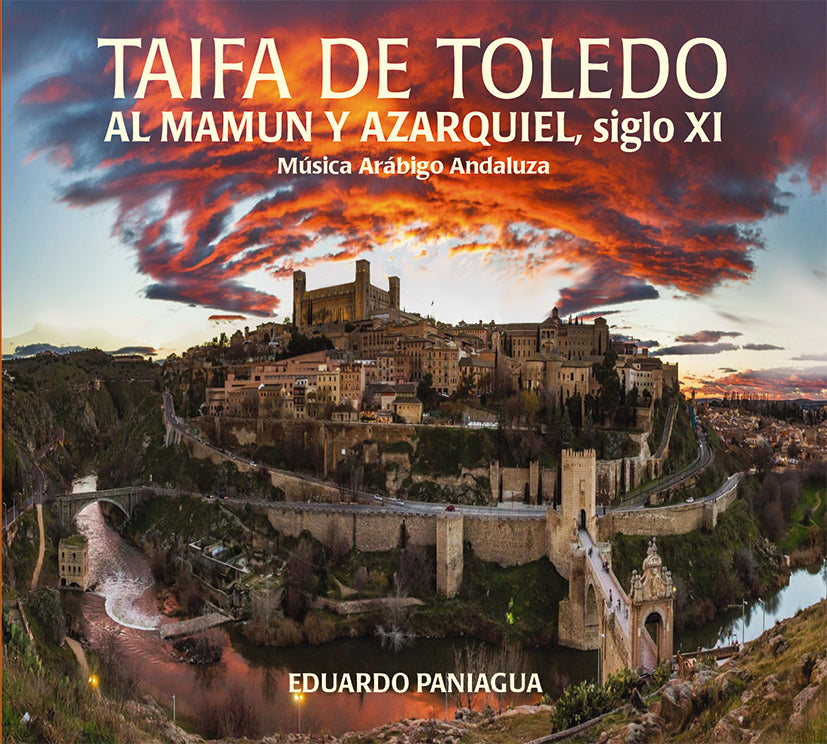
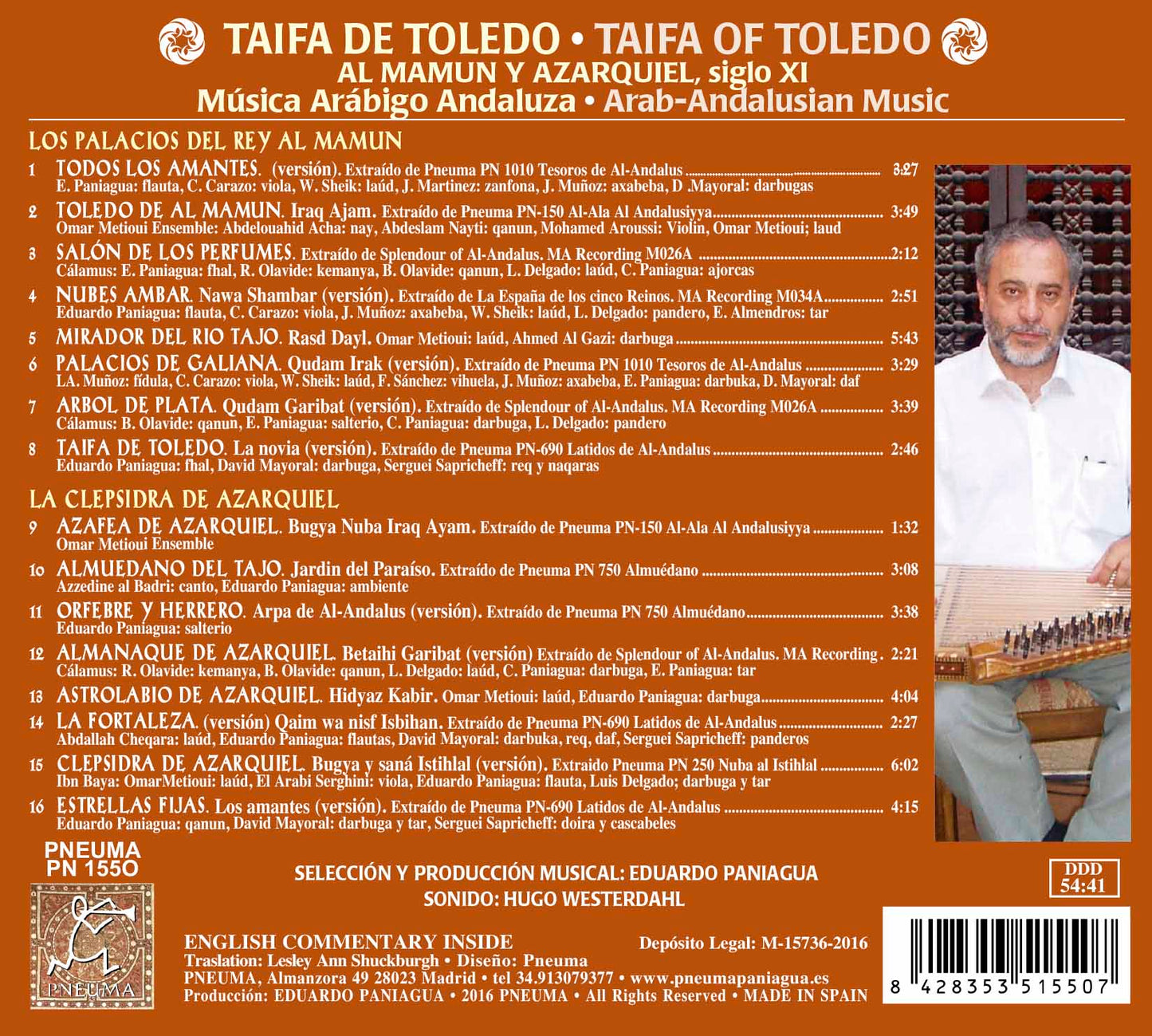
-
Envío gratis en pedidos mayores a 50 €.
Entrega en 5-7 días laborables para pedidos en España, en el caso de envíos fuera de España el tiempo de envío podría ser algo mayor.
-
Todo el trabajo de Pneuma Music se ha realizado en España.
Música medieval española inédita hasta el momento. Sus discos, con formato Digipack de cubierta de cartón y libreto interior (bilingüe + idioma original), quieren acercarse a una obra de arte total.
